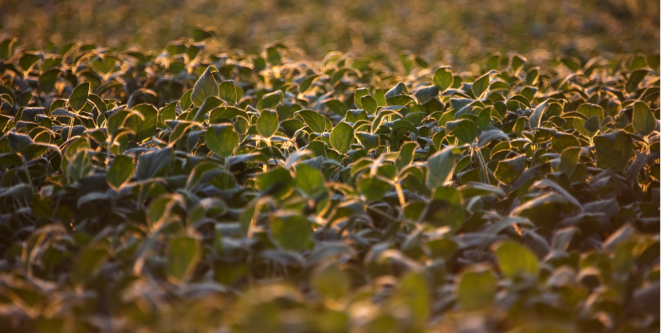
Although each crop has specific needs to be able to achieve their maximum economic yield, soybeans have earned themselves a reputation for being a lower-maintenance crop. Growers might be surprised to see that with a little extra effort, they can have more impact on their soybean yields by producing stronger and healthier plants. With this careful attention, yield results may prove surprisingly better come harvest.
Soybean growers will have a more successful season if they stay aware of the following soybean sensitivities:
1. Timing and Planting Environment
Soybeans, like corn, benefit from an earlier planting time. With longer exposure time, the crop receives more sunlight and water. In addition to finding the timing sweet spot for planting, growers should be aware of ideal soil temperature when planting soybeans. The benefits of an earlier planting date can be diminished if the soil is too cold to successfully germinate the seeds and encourage a strong emergence. Ideal soil temperature for planting beans is around 55° to 60° Fahrenheit.
2. Planting Depth
During the planting process, exact location of the soybean seed is vital to ensure uniform emergence. Soybeans are likely to prosper when planted about 1.25 to 1.5 inches into the soil. At this depth, the seeds will have access to the moisture they require to develop. With all seeds planted at or near the same depth and with access to appropriate moisture, growers should see better consistency across their field.
3. Seed Treatments
When it comes to soybeans, growers should understand what disease and pest pressures they need to be aware of for their respective fields. Their local ag retailer can help them develop a strategic plan to achieve their soybean yield goals. With current options in customized seed treatments, retailers can help their customer with a specialized seed treatment that best helps them get their crop off to a good start, but is also cost effective since it includes the active ingredients they need and not a lot of products they do not need.
4. pH Sensitivity
Soybean plants grow better in soils with a balanced pH level. According to Fred Below, Ph.D., plant scientist at the University of Illinois, the ideal range is between 6.0 and 6.8. The root system of the soybean plant leaves them vulnerable to soils that are more acidic or soils that tend to be heavily alkaline. The soybean plant’s single taproot only allows it to extract nutrients from one concentrated area. Acidity from the plant can be helpful to its growth initially, but if it is washed away by rain, the soil can become alkaline heavy. This makes nutrients unavailable to the plant. On the other hand, soil that is more acidic will shut down microbes in the soil. Maintaining a healthy, balanced pH level is an important to ensure the soybean plants are able to access an optimum level of nutrients at the time they need them to produce the best possible yields.
5. Soil Fertility
There are several nutrients that are critical to developing a healthy and high yielding soybean plant. Phosphorus and potassium are two key players in soybean health. Potassium helps with water management and disease prevention while phosphorus is used during growth and reproduction to store and help transfer energy produced by photosynthesis. It also helps enhance shoot and root growth and promote early maturity.
Micronutrients are also important to proper growth of soybeans. For example, soybeans need access to the appropriate amounts of soluble iron to develop into healthy plants. Iron is critical to the development of chlorophyll within the plant. Iron Deficiency Chlorosis (IDC) is a common soil issue in some areas of the country. IDC tends to occur in soil with high pH levels, which can prevent plant roots from reducing iron to a soluble state that can be used by the plant.
Soybean Health Resources
For additional soybean resources, check out a recent article by Kansas State Extension featured in Ag Professional, about the “Soybean Growth and Development” poster published by K-State Research and Extension.
Original Source: Leaders of In-Furrow Technology, West Central

